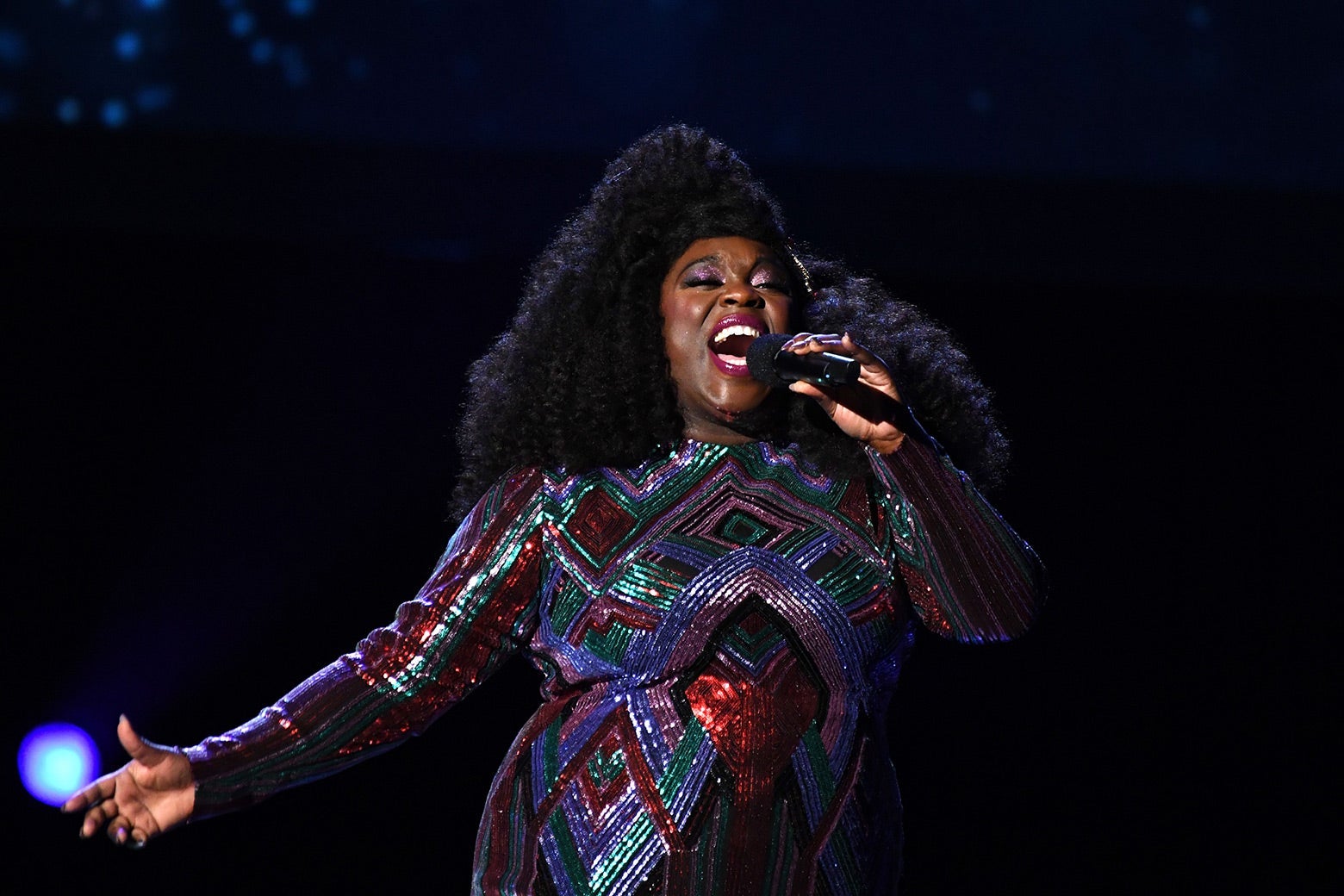On this week’s episode of Working, Isaac Butler spoke with singer-songwriter Yola. They discussed her multi-step writing process, what she looks for in a musical collaborator, and her road to recovery from losing her singing voice to vocal nodes. This partial transcript has been edited and condensed for clarity.
Isaac Butler: I was thinking about the song, “Stand For Myself” off your new album by the same name. What were the conversations that led to sparking the inspiration for that song?
Yola: Because I’m a collector, it can sometimes take me years to finish a song. It came into my head maybe in 2017, but it was doing my head in for a really long time. I didn’t know what it wanted to be. Parts would arrive; I’d sing them into my phone—I’d be thinking of a guitar feel or a drum feel, or something—and it just would develop. The subject landed really hard in 2018. At that time, it was a melody. I call it the “shmer” where you do all the vowels, but none of the actual words. It was like something was crowning, but it wasn’t there yet. Then all of a sudden—ka-blamo!—it lands in 2018, and when it lands it like keeps me up at night. I’m like, “I need to get this out of my head.”
I definitely had taken a change in my trajectory, if you will, creatively and socially and personally. I was beginning a journey, and I think the song is a commentary on that.
What was that journey, from where to where?
From being an absolute motherfucking doormat, mate. I tell you, I was being labeled as the archetype of “strong Black woman” whilst not being remotely strong, not even a bit strong. Just trampled and weak, but because I’m a dark-skinned Black woman, “Oh, there you go, you get to be a strong Black woman!” I’m like, “How? There’s no part of my life where I’ve been strong. I don’t understand what this strength is.” I’m trampled, but you can get that moniker, then as a result of that, you can endure anything. The idea of moving from that “doormat Yola” without any boundaries of any kind, to slowly figuring out what boundaries are and asserting them for the first time somewhat later in my life and going, “Oh wow, people really don’t like it when I have boundaries, I need to change a lot of the people in my life.”
Everything from actually asking for allyship from people that you think might be capable of giving that, being another thing that was a large part of my life. Through that reaching out for allyship, starting to draw boundaries where I thought people needed them, realizing that there’s something very central to the Black-lady experience, and it’s neglect. I need to put myself in environments where neglect isn’t the central paradigm for my existence. Finding spaces in which that’s not the case was really hard. It took a really long time.
So you’re having that journey and commenting on it at the same time, or at least your subconscious is, through these songs burbling up out of it.
Welcome to my subconscious. No one’s ever said that, but that’s the very core of the entirety of my songwriting process. Once, way back, I broke my ankle—and it was about the same time that I got vocal nodes, and I couldn’t speak for two months, I couldn’t sing for a year and a half—and I went to the doctor and they were like, “OK, off to the hospital you go.” I get fixed up, and they put me on some pretty hard-core meds for quite a while. Normally I’ve got a commentary on what’s happening in my life, but on these meds, I had nothing to say. I was just like, “Everything’s brilliant.” Point being, when I finally came down, the commentary was waiting, and it delivered itself in my mind, like a stand-up that was hilarious.
So it dawned on me at that point that, even if I wasn’t saying the usual facetious commentary that I would be delivering, it was still in there. That’s something that I now lean into in my creative guise. I know that I’m processing stuff, even if I’m not consciously processing something. When I’m writing, it’s really important for me to be in a still environment, for me to be distracting my prefrontal cortex with something like TV or a view or something that’s going to focus my conscious mind. Then I’m just strumming without an aim. I’m just trying to get my strum nice. I’m trying to get a nice sound. But in that distraction, ideas coalesce at great speed.
I was experimenting with that because I remember hearing that a lot of physicists use menial jobs or a prefrontal cortex distraction technique to solve complex equations or problems that they were having. I was like, “So what are they doing?” They talk about how the colliculi collect all the information that we’ve ever seen in our peripheral vision, every environment we’ve ever been in, and it’s all just in our brains sitting and waiting. If you’re in the right part of your brain, you can bump into all of that information and make some rather elegant connections. So it started as almost an experiment that then turned into my main process.
To listen to the full interview with Yola, subscribe to Working on Apple Podcasts or Spotify, or listen below.
